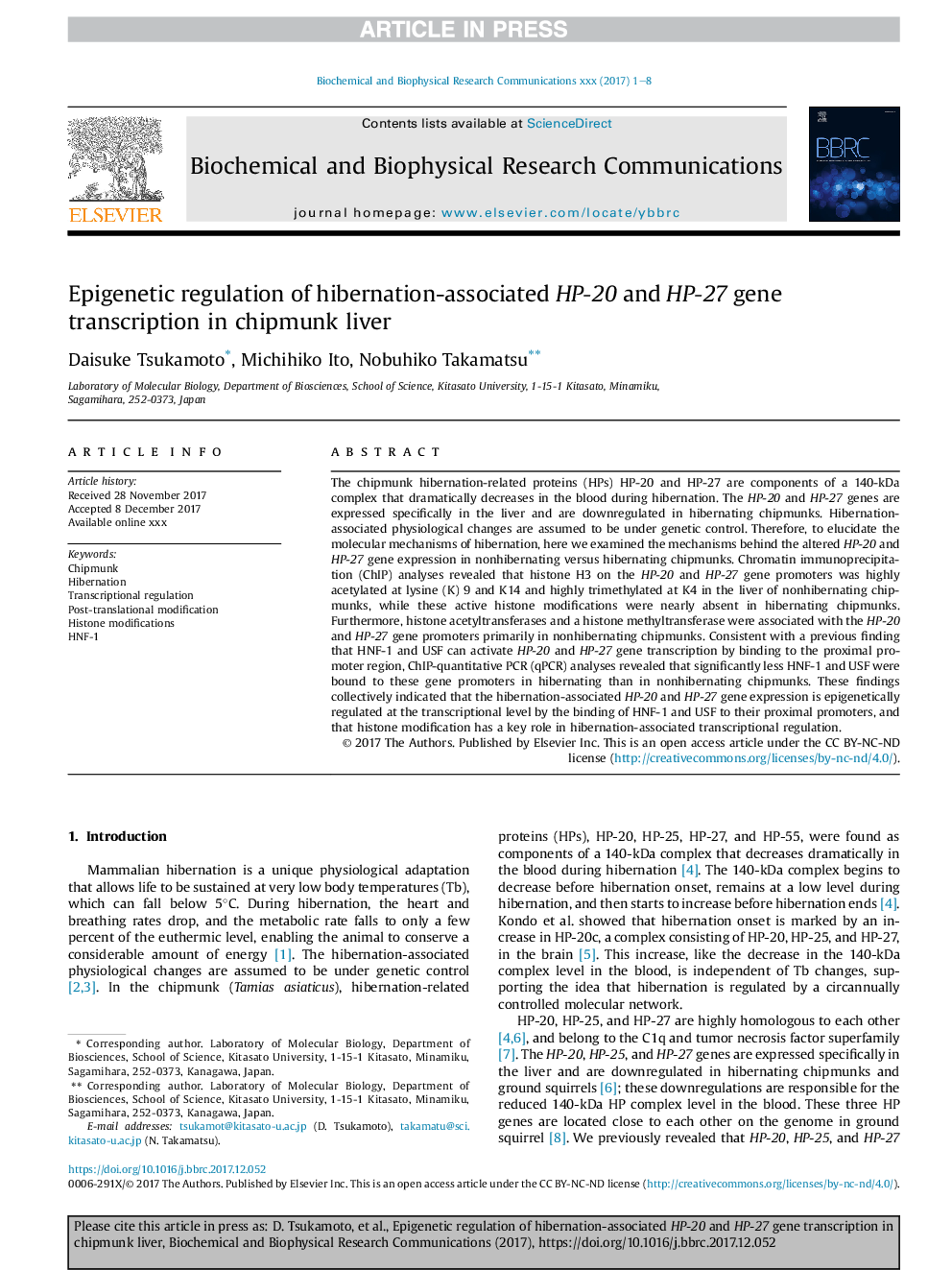| Article ID | Journal | Published Year | Pages | File Type |
|---|---|---|---|---|
| 8295360 | Biochemical and Biophysical Research Communications | 2018 | 8 Pages |
Abstract
The chipmunk hibernation-related proteins (HPs) HP-20 and HP-27 are components of a 140-kDa complex that dramatically decreases in the blood during hibernation. The HP-20 and HP-27 genes are expressed specifically in the liver and are downregulated in hibernating chipmunks. Hibernation-associated physiological changes are assumed to be under genetic control. Therefore, to elucidate the molecular mechanisms of hibernation, here we examined the mechanisms behind the altered HP-20 and HP-27 gene expression in nonhibernating versus hibernating chipmunks. Chromatin immunoprecipitation (ChIP) analyses revealed that histone H3 on the HP-20 and HP-27 gene promoters was highly acetylated at lysine (K) 9 and K14 and highly trimethylated at K4 in the liver of nonhibernating chipmunks, while these active histone modifications were nearly absent in hibernating chipmunks. Furthermore, histone acetyltransferases and a histone methyltransferase were associated with the HP-20 and HP-27 gene promoters primarily in nonhibernating chipmunks. Consistent with a previous finding that HNF-1 and USF can activate HP-20 and HP-27 gene transcription by binding to the proximal promoter region, ChIP-quantitative PCR (qPCR) analyses revealed that significantly less HNF-1 and USF were bound to these gene promoters in hibernating than in nonhibernating chipmunks. These findings collectively indicated that the hibernation-associated HP-20 and HP-27 gene expression is epigenetically regulated at the transcriptional level by the binding of HNF-1 and USF to their proximal promoters, and that histone modification has a key role in hibernation-associated transcriptional regulation.
Keywords
Related Topics
Life Sciences
Biochemistry, Genetics and Molecular Biology
Biochemistry
Authors
Daisuke Tsukamoto, Michihiko Ito, Nobuhiko Takamatsu,
